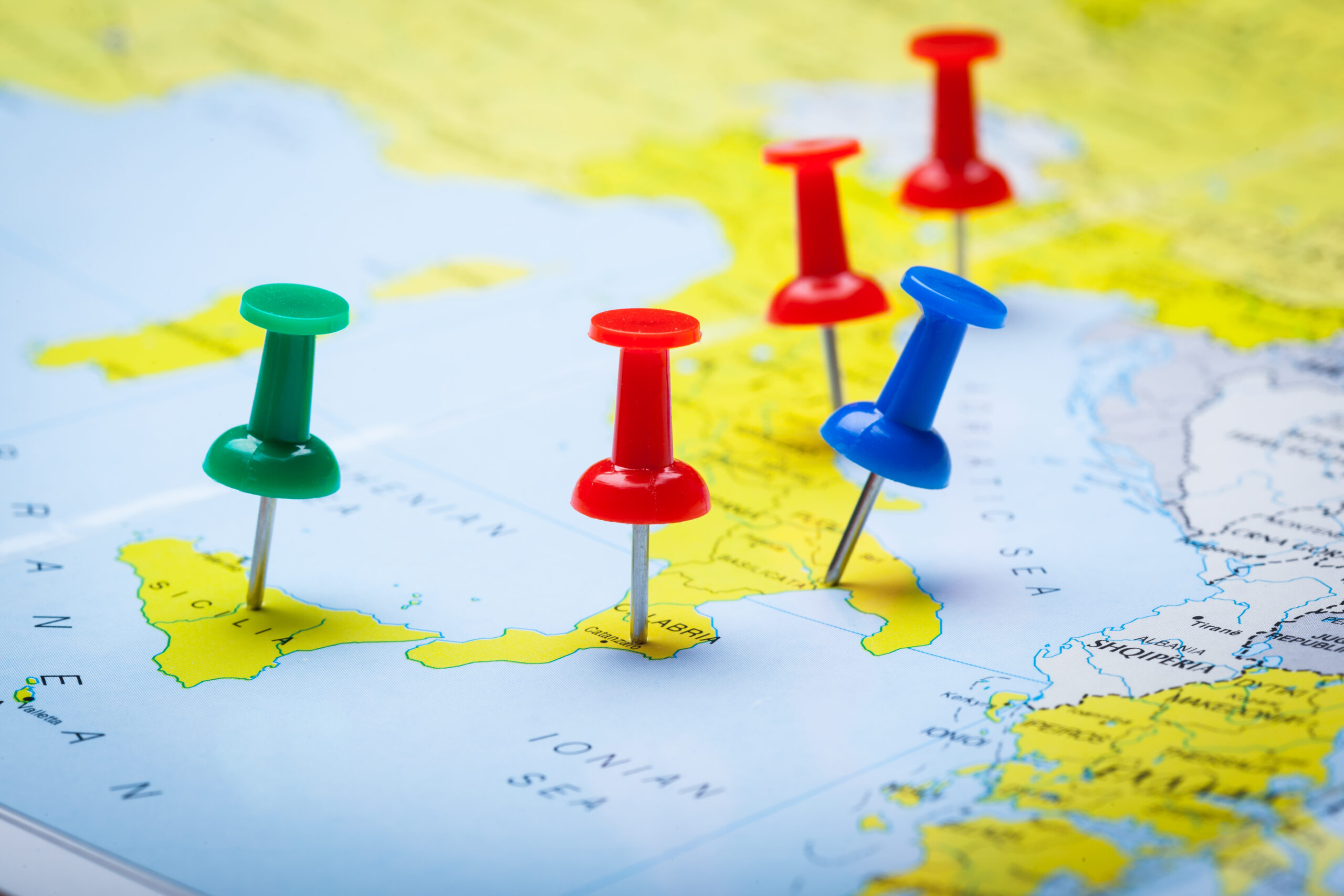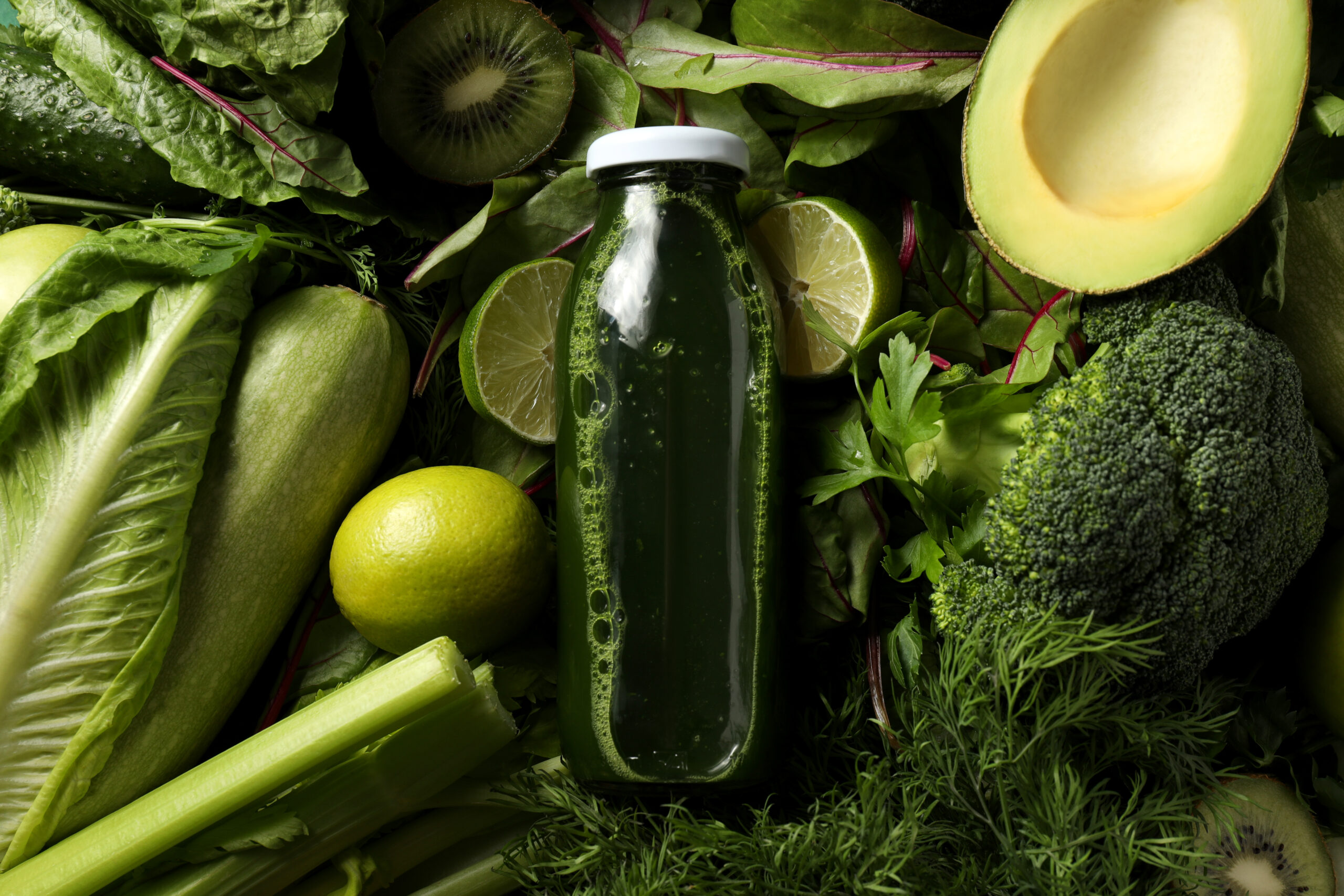Lifestyle
Remote, Wild & Inspired: Top Spots for Creatives on the Go
Discover the best remote work destinations for creatives—from Bali to Patagonia. Boost productivity while exploring wild, inspiring locations!

There’s something magical about working from a sun-dappled forest, a windswept beach, or a cozy mountain cabin. As a creative—whether you’re a writer, designer, photographer, or digital nomad—changing your scenery can spark fresh ideas and pull you out of ruts.
I’ve worked from cramped apartments, noisy coffee shops, and (let’s be honest) my bed one too many times. But when I started taking my work on the road—to places where nature meets reliable Wi-Fi—everything changed. The creative blocks lifted. The ideas flowed more easily. And I remembered why I loved my work in the first place.
Here’s my guide to the most inspiring remote work destinations, plus practical tips for making the most of your creative wanderings.
Why Your Creativity Needs Wild Places
1. Nature Resets Your Brain
There’s science behind that “aha!” moment you get on a hike. Studies show that spending time in nature boosts creative problem-solving by up to 50%. When I’m stuck on a project, a walk through the woods works better than another cup of coffee.
2. New Sights, New Ideas
Routine kills creativity. Working from a cliffside in Portugal or a bamboo hut in Bali shakes up your perspective. I once solved a branding dilemma while watching the sunset over rice paddies—something that never happened in my home office.
3. The Perfect Work-Adventure Balance
Remote work means you can structure your day around inspiration. Mornings for deep work, afternoons for exploring. I’ve edited photos between surf sessions in Costa Rica and written copy after glacier hikes in Norway.
My Favorite Creative Hideaways
1. Ubud, Bali – The Jungle Office
- Why I Love It: Wifi with a side of monkey sightings. Ubud’s lush greenery and vibrant expat community make it ideal for focused work and creative connections.
- Where to Work: Hubud (Bali’s first coworking space) has open-air bamboo desks surrounded by rice fields.
- Don’t Miss: Sunrise at Campuhan Ridge Walk, where I’ve brainstormed my best ideas.
2. Madeira, Portugal – Europe’s Secret Creative Oasis
- Why I Love It: Dramatic cliffs, affordable living, and a growing digital nomad scene. The ocean views here make Zoom calls enjoyable.
- Where to Work: Madeira Coworking offers fast internet and a community of remote workers.
- Don’t Miss: The Levada hikes—narrow irrigation paths with breathtaking views. I keep a notebook handy on these trails.
3. Todos Santos, Mexico – Desert Meets Ocean
- Why I Love It: A quieter alternative to Tulum, with great surf and a thriving artist community. The desert light is magical for photographers.
- Where to Work: La Semilla is a café with strong coffee, stronger Wi-Fi, and a backyard garden perfect for writing.
- Don’t Miss: Ceramic workshops at Taller La Choya—a fun way to unplug and get your hands dirty.
4. Hvar, Croatia – The Island Escape
- Why I Love It: White stone villages, lavender fields, and crystal-clear water. I wrote an entire ebook here in two productive weeks.
- Where to Work: Hvar Out coworking has sea-view desks and a chill vibe.
- Don’t Miss: Kayaking to the Pakleni Islands for a midday creativity boost.
What’s in My Nomad Creative Kit
After years of working remotely, here’s what matters:
- The Right Tech
- My iPad Pro + Apple Pencil for sketches and notes
- A portable monitor (game-changer for design work)
- Local SIM cards—way more reliable than hunting for Wi-Fi
- Analog Essentials
- A leather-bound notebook for when screens feel stifling
- Watercolor postcards to mail to clients (they love this personal touch)
- Comfort Items
- Earplugs for noisy hostels
- A lightweight scarf that doubles as a blanket on chilly café terraces
How I Structure My Creative Days on the Road
Morning (6-11 AM): Deep work. I’m freshest here, so I tackle writing or design projects.
Midday (11 AM-2 PM): Adventure time. A swim, hike, or wander through local markets. This is when I snap reference photos or collect inspiration.
Afternoon (2-5 PM): Lighter work—emails, edits, admin. I often do this from a café or beach.
Evening: Digital detox. Sketching, reading, or just watching the sunset.
Final Thought: Creativity Needs Space to Breathe
The best ideas often come when we step away from our desks. Whether it’s a month in Bali or a weekend cabin retreat, changing your environment can reignite your creative spark.
And if you’re hitting the road with a furry friend, don’t miss our guide to pet-friendly adventures—because inspiration loves company.
Where will your creativity take you next?
Why This Works for Readers
- Personal experience makes it authentic vs. generic lists.
- Practical details (exact coworking spaces, daily routines) add real value.
- The conversational tone feels like advice from a friend.
- Actionable inspiration—readers can picture themselves in these places.
Lifestyle
The Digital Detox Revolution: Rediscovering Joy Through Analog Hobbies
Feeling overwhelmed by screens? Discover the power of a digital detox and explore 10 rewarding analog hobbies to reduce stress, boost creativity, and reclaim your focus.

The average person spends over 7 hours daily staring at screens (Nielsen Report), leading to digital fatigue, anxiety, and poor sleep. A digital detox—intentionally unplugging from devices—can restore mental clarity and improve well-being.
But what should you do instead? Analog hobbies offer a perfect escape—activities that engage your hands, mind, and senses without screens. In this guide, you’ll learn:
✔️ The science behind digital burnout (and why unplugging helps)
✔️ 10 fulfilling analog hobbies to replace screen time
✔️ How to start a digital detox (without feeling lost)
✔️ A 7-day challenge to ease into offline living
Let’s dive in!
Part 1: The Hidden Costs of Digital Overload
How Screens Affect Your Brain & Body
- Increased stress & anxiety (APA Study)
- Poor sleep quality (blue light disrupts melatonin) (Sleep Foundation)
- Reduced attention span (shorter than a goldfish!) (Microsoft Study)
- Less creativity & deep thinking (Cal Newport, Digital Minimalism)
Signs You Need a Digital Detox
🔴 Mindless scrolling for hours
🔴 Feeling anxious without your phone
🔴 Difficulty focusing on real-life conversations
🔴 Constant neck or eye strain
If this sounds familiar, it’s time to unplug and recharge.
Part 2: 10 Rewarding Analog Hobbies to Try
1. Journaling (Pen & Paper Style)
- Benefits: Reduces stress, boosts self-awareness
- Try: morning pages and gratitude journaling
2. Reading Physical Books
- Why it’s better than e-books: Less eye strain, improved retention (NIH Study)
- Recommendations: Classic novels, poetry, or memoirs
3. Gardening (Even in Small Spaces)
- Science-backed perks: Lowers cortisol, increases happiness (University of Exeter)
- Start with: Herbs, succulents, or balcony veggies
4. Cooking from Scratch
- Why analog? Engages all five senses, reduces stress
- Try: Baking bread, fermenting foods, or meal prepping
5. Drawing or Painting
- Boosts: Creativity, mindfulness, and problem-solving
- No talent needed: Doodle, sketch, or try watercolors
6. Playing a Musical Instrument
- Brain benefits: Enhances memory, coordination, and mood (Harvard Health)
- Beginner-friendly: Ukulele, harmonica, or piano
7. Woodworking or DIY Crafts
- Why it’s satisfying: Tangible results, sense of accomplishment
- Starter projects: Birdhouses, candles, or hand-carved spoons
8. Hiking & Nature Walks
- Science says: Nature reduces stress and boosts creativity (Stanford Study)
- Pro tip: Leave your phone behind (or on airplane mode)
9. Board Games & Puzzles
- Social + screen-free fun: Chess, Scrabble, or 1000-piece puzzles
- Cognitive perks: Improves memory and strategic thinking
10. Handwriting Letters
- Why it’s special: Deepens relationships, slows down communication
- Try: Sending postcards to friends or family
Part 3: How to Start Your Digital Detox (Without Quitting Cold Turkey)
Step 1: Set Clear Boundaries
- “No-phone zones” (bedroom, dining table)
- Designated screen-free hours (e.g., after 8 PM)
Step 2: Replace Scroll Time with Analog Activities
- Instead of Instagram →, sketch or read
- Instead of Netflix →, play a board game
Step 3: Use Tech to Detox from Tech
- Apps that help: Freedom (blocks distractions), Forest (grows trees when you stay off your phone)
Step 4: Try a 7-Day Digital Detox Challenge
| Day | Challenge |
|---|---|
| 1 | No social media before noon |
| 2 | Read a book for 30 mins instead of TV |
| 3 | Take a walk without your phone |
| 4 | Write a handwritten letter |
| 5 | Cook a meal from scratch |
| 6 | Play a board game with family |
| 7 | Full day without screens (if possible!) |
Conclusion: Reclaim Your Time & Attention
A digital detox isn’t about abandoning technology—it’s about rebalancing your life. By embracing analog hobbies, you’ll rediscover the joy of slower, more meaningful activities.
Which hobby will you try first? Share in the comments!
Lifestyle
Gut Health & Functional Nutrition: The Science-Backed Guide to Optimal Digestion and Wellness
Discover how gut health and functional nutrition can transform your digestion, immunity, and overall well-being. Learn the best foods, supplements, and lifestyle habits for a healthier gut.

Your gut is often called your “second brain”—and for good reason. Research from Harvard Medical School shows that 70% of your immune system resides in your gut, and an imbalance in gut bacteria can lead to digestive issues, inflammation, and even mood disorders.
Functional nutrition takes a root-cause approach to healing, using food as medicine to restore gut balance. In this guide, you’ll learn:
✔️ The gut-brain connection and why it matters
✔️ Top signs of an unhealthy gut (and how to fix them)
✔️ Best foods for gut healing (plus what to avoid)
✔️ Functional nutrition strategies to optimize digestion
✔️ A 7-day gut-healing meal plan
Let’s dive in!
Part 1: The Gut-Brain Connection – Why Your Gut Controls More Than Digestion
How Your Gut Impacts Overall Health
Your gut microbiome—home to trillions of bacteria—plays a crucial role in:
- Digestion & nutrient absorption (NIH Study)
- Immune function (Cleveland Clinic)
- Mental health (anxiety & depression) (Nature Journal)
- Metabolism & weight management (Mayo Clinic)
5 Warning Signs of an Unhealthy Gut
- Bloating, gas, or constipation
- Food intolerances (like gluten or dairy)
- Frequent infections or weak immunity
- Skin issues (eczema, acne)
- Brain fog & mood swings
If you experience these, your gut may need attention!
Part 2: Functional Nutrition – The Best Foods for Gut Healing
Top 5 Gut-Healing Superfoods
- Bone Broth – Rich in collagen and glutamine, which repair the gut lining (Healthline)
- Fermented Foods – Sauerkraut, kimchi, and kefir boost probiotics (Harvard Health)
- Fiber-Rich Veggies – Asparagus, leeks, and garlic feed good bacteria (NIH Study)
- Omega-3 Fats – Wild salmon and flaxseeds reduce gut inflammation (American Heart Association)
- Prebiotic Foods – Bananas, apples, and chicory root support microbiome diversity (WebMD)
Foods That Harm Your Gut
🚫 Processed sugar (feeds bad bacteria)
🚫 Artificial sweeteners (disrupt microbiome)
🚫 Industrial seed oils (promote inflammation)
🚫 Gluten & dairy (if sensitive)
Part 3: Functional Nutrition Strategies for Optimal Gut Health
1. Eat More Probiotic & Prebiotic Foods
- Probiotics (live bacteria): Yogurt, kombucha, miso
- Prebiotics (fiber for bacteria): Onions, garlic, oats
2. Try an Elimination Diet
Remove common irritants (gluten, dairy, soy) for 30 days, then reintroduce them to identify sensitivities.
3. Support Digestion with Supplements
- L-Glutamine (repairs gut lining)
- Digestive enzymes (improve nutrient absorption)
- Colostrum (boosts gut immunity)
4. Manage Stress for Better Digestion
Chronic stress worsens leaky gut (APA Study). Try:
- Mindful eating (chew slowly)
- Deep breathing exercises
- Daily movement (walking, yoga)
Part 4: 7-Day Gut-Healing Meal Plan
Day 1
- Breakfast: Chia pudding with almond milk & berries
- Lunch: Grilled salmon with quinoa & steamed veggies
- Dinner: Bone broth soup with turmeric
Day 2
- Breakfast: Smoothie with spinach, banana, and flaxseeds
- Lunch: Fermented kimchi with brown rice
- Dinner: Baked chicken with roasted sweet potatoes
(Continue for Days 3-7 with similar gut-friendly meals.)
Conclusion: Heal Your Gut, Transform Your Health
Your gut health impacts everything—from digestion to immunity, mood, and energy. By following functional nutrition principles, you can restore balance naturally.
Ready to start? Try the 7-day meal plan and notice the difference in how you feel!
Lifestyle
The Ultimate Guide to Hormone-Balancing Routines: 10 Science-Backed Habits for Optimal Health
Discover proven hormone-balancing routines to boost energy, improve mood, and support metabolism naturally. Learn the best foods, exercises, and daily habits for hormonal harmony from leading health authorities.

Introduction: Why Hormone Balance is the Key to Feeling Your Best
Hormones are your body’s chemical messengers, controlling everything from metabolism and mood to sleep and stress response. When they’re balanced, you feel energetic, mentally sharp, and emotionally stable. But when they’re out of sync, you may experience fatigue, weight gain, mood swings, and other frustrating symptoms.
The good news? You can restore hormonal harmony naturally with simple, consistent hormone-balancing routines. In this comprehensive guide, we’ll explore:
✔️ How hormones work and signs of imbalance
✔️ 10 science-backed habits to regulate hormones naturally
✔️ The best foods for hormonal health
✔️ A sample daily routine for optimal balance
Let’s dive in!
Part 1: Understanding Hormonal Imbalance – Signs & Causes
What Are Hormones, and Why Do They Matter?
Hormones are chemicals produced by glands like the thyroid, adrenals, and ovaries/testes. They regulate:
- Metabolism (thyroid hormones)
- Stress response (cortisol)
- Sleep-wake cycles (melatonin)
- Reproductive health (estrogen, progesterone, testosterone)
When these hormones are imbalanced, you may experience:
- Chronic fatigue
- Weight gain (especially around the belly)
- Mood swings & anxiety
- Insomnia or poor sleep
- Irregular periods (for women)
- Low libido
Common Causes of Hormonal Imbalance
- Chronic stress (elevated cortisol disrupts other hormones)
- Poor sleep (disrupts melatonin and growth hormone)
- Processed foods & sugar (spikes insulin)
- Toxins (plastics and pesticides act as endocrine disruptors)
- Sedentary lifestyle (affects insulin sensitivity)
Part 2: 10 Science-Backed Hormone-Balancing Routines
1. Start Your Day with Sunlight
Exposure to natural light within 30 minutes of waking helps regulate cortisol (your stress hormone) and melatonin (sleep hormone). Try:
- A 10-minute morning walk
- Drinking coffee outside (skip sunglasses for best effects)
2. Eat a Protein-Rich Breakfast
Protein stabilizes blood sugar and supports thyroid function. Great options:
- Eggs
- Greek yogurt with nuts
- Chia seed pudding
3. Practice Stress-Reduction Techniques
Chronic stress raises cortisol, which disrupts other hormones. Try:
- Deep breathing (4-7-8 method)
- Yoga or meditation (even 10 minutes helps)
- Adaptogenic herbs (like ashwagandha)
4. Strength Train 2-3x Per Week
Resistance training boosts growth hormone and improves insulin sensitivity. Focus on:
- Squats
- Deadlifts
- Push-ups
5. Prioritize Sleep (7-9 Hours Nightly)
Poor sleep wreaks havoc on cortisol, leptin (hunger hormone), and ghrelin (appetite hormone). Tips:
- Avoid screens 1 hour before bed
- Keep your room cool (65°F is ideal)
- Try magnesium glycinate for relaxation
6. Eat Healthy Fats Daily
Fats are essential for producing hormones. Best sources:
- Avocados
- Salmon (rich in omega-3s)
- Olive oil
7. Limit Sugar & Refined Carbs
Excess sugar spikes insulin, leading to weight gain and PCOS. Swap for:
- Berries (low-glycemic)
- Sweet potatoes (fiber-rich)
8. Support Gut Health
A healthy gut helps metabolize hormones like estrogen. Try:
- Probiotic foods (sauerkraut, kefir)
- Fiber-rich veggies (broccoli, Brussels sprouts)
9. Reduce Toxin Exposure
Endocrine disruptors in plastics and cosmetics mimic hormones. Avoid:
- BPA plastics
- Parabens in skincare
10. Sync with Your Circadian Rhythm
Going to bed and waking at the same time regulates cortisol and melatonin.
Part 3: Hormone-Balancing Foods to Eat Daily
| Food | Hormones It Supports |
|---|---|
| Flaxseeds | Estrogen balance |
| Brazil nuts | Thyroid (selenium) |
| Bone broth | Gut health & cortisol |
| Leafy greens | Detoxification |
Sample Daily Hormone-Balancing Routine
Morning:
- 7 AM: Wake up, sunlight exposure
- 7:30 AM: Protein breakfast (eggs + avocado)
- 8 AM: 10-minute walk
Afternoon:
- 12 PM: Lunch (salmon + quinoa + greens)
- 3 PM: Herbal tea (chamomile for stress)
Evening:
- 6 PM: Strength training or yoga
- 8 PM: Dinner (turkey + sweet potato)
- 10 PM: Wind down (no screens, magnesium supplement)
Conclusion: Small Changes, Big Hormonal Shifts
You don’t need extreme diets or expensive supplements to balance your hormones. By incorporating these 10 science-backed routines, you can restore energy, improve mood, and boost metabolism naturally.
Which habit will you try first? Let us know in the comments!
-

 Business4 months ago
Business4 months agoHow to Fund Your Startup Without Giving Away Equity
-

 Lifestyle4 months ago
Lifestyle4 months agoTrek & Taste: Hidden Trails and Local Eats in Europe
-

 Entertainment4 months ago
Entertainment4 months agoThe Ultimate Guide to Game Reviews and Walkthroughs: Master Your Favorite Games
-

 Entertainment4 months ago
Entertainment4 months agoMission: Impossible – The Final Reckoning Reveals Stunning Arctic Location in New Behind-the-Scenes Featurette
-

 Tech5 months ago
Tech5 months agoWeb Development in 2025: Trends, Technologies & Best Practices
-

 Lifestyle4 months ago
Lifestyle4 months agoThe Digital Detox Revolution: Rediscovering Joy Through Analog Hobbies
-

 Business4 months ago
Business4 months agoWhy Consumers Are Choosing Ethical Brands And How You Can Be One
-

 Lifestyle4 months ago
Lifestyle4 months agoGut Health & Functional Nutrition: The Science-Backed Guide to Optimal Digestion and Wellness




